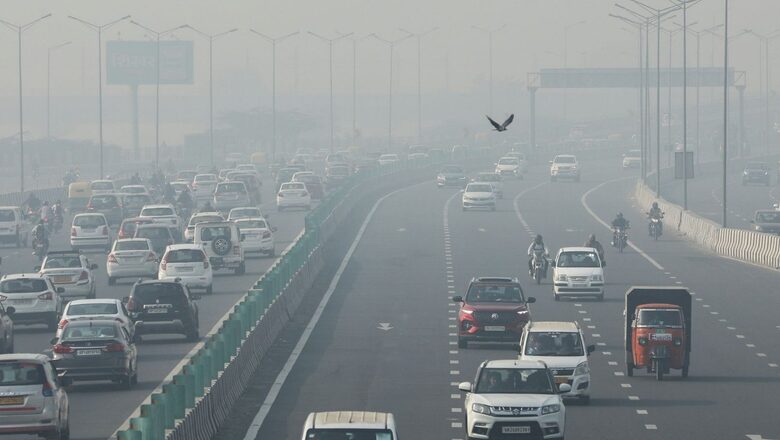
views
Delhi’s air quality turned poor on Dussehra, though the early warning system of the Indian Institute of Tropical Meteorology had predicted moderate to satisfactory air quality in the capital. IITM officials said that they did not record any substantial changes in parameters like temperature, wind speed and emissions from farm fires on October 5 and “hyperlocal emissions” could have impacted the air quality.
The possible sources of these emissions could be the large number of effigies burnt on the occasion of Dussehra and during a political protest, they said. With the air quality in Delhi dropping to the ‘poor’ category on Wednesday, authorities in the National Capital Region (NCR) have been asked to strictly implement measures under “Stage 1” of the Graded Response Action Plan (GRAP) which include penal and legal action against polluting industrial units.
The Centre’s sub-committee on GRAP noted in a meeting that there has been a “sudden dip” in air quality parameters in the region which pushed Delhi’s Air Quality Index (AQI) into the ‘poor’ category. “While this is likely due to a localised influence and the forecasts do not predict any further deterioration, in an effort to maintain the AQI in the moderate category, as a precautionary measure, the sub-committee decided that all actions as envisaged under Stage I of the GRAP – ‘Poor’ air quality (AQI 201-300) be implemented in right earnest by all the agencies concerned with immediate effect in the NCR,” the Commission for Air Quality Management (CAQM) said in an order.
The GRAP has four different stages of adverse air quality: Stage I – ‘Poor’ (AQI 201-300), Stage II – ‘Very Poor’ (AQI 301-400), Stage III – ‘Severe’ (AQI 401-450) and Stage IV – ‘Severe Plus’ (AQI >450). Under Stage 1, the Centre’s CAQM recommends stopping construction and demolition activities at sites having a plot size equal to or bigger than 500 sqm that are not registered on the web portal of the respective states for remote monitoring of air pollution levels.
Delhi’s 24-hour average AQI stood at 211 (poor category) at 4 pm on Wednesday, worsening from 150 at 4 pm on Tuesday. It was 248 in Ghaziabad, 196 in Faridabad, 234 in Greater Noida, 238 in Gurugram and 215 in Noida on Wednesday. The air quality in the national capital improved to the ‘satisfactory’ category (AQI 79) on Thursday owing to favourable wind direction and speed.
According to the IITM’s Early Air Quality Warning System for Delhi, the air quality is likely to remain largely in the ‘satisfactory’ category over the next six days.
.
Read all the Latest News India and Breaking News here



















Comments
0 comment